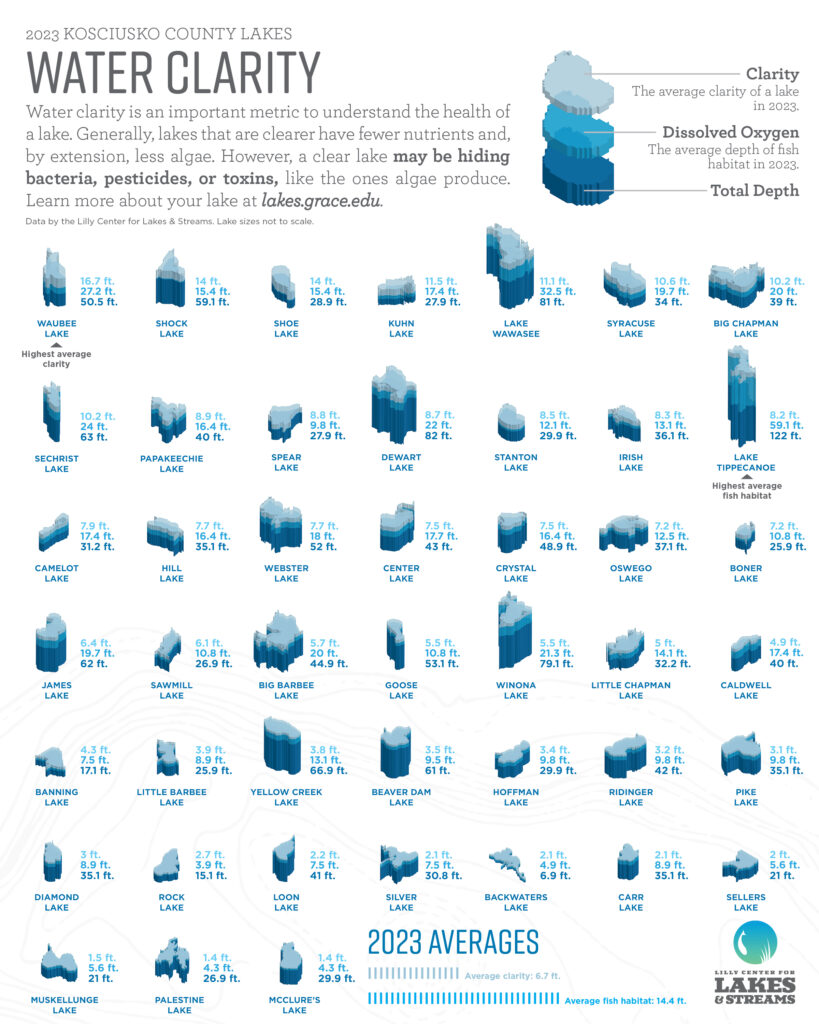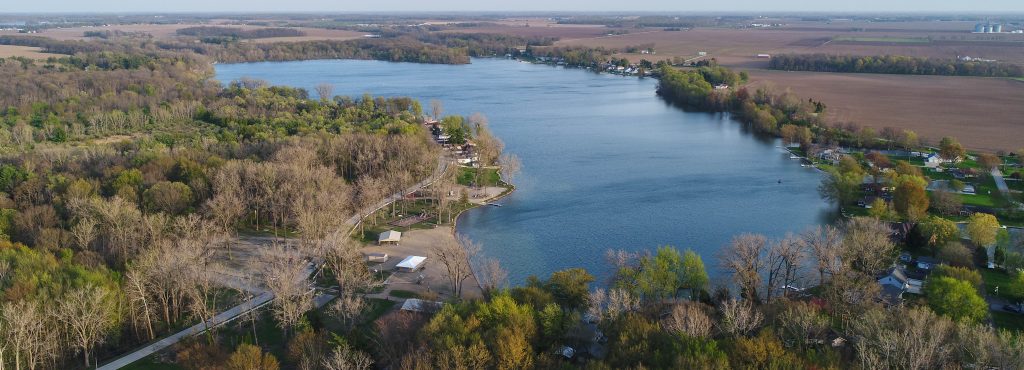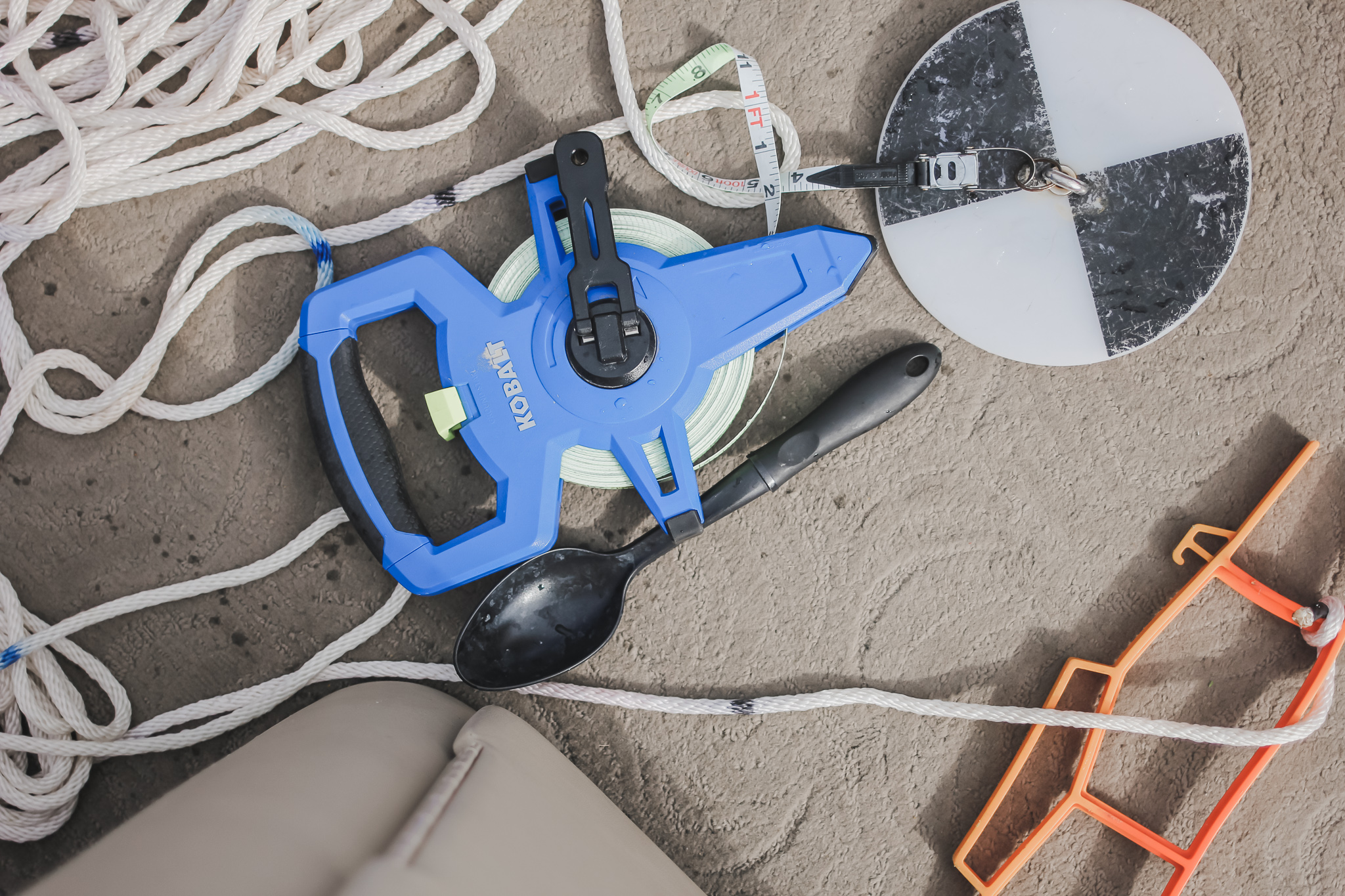How Clear is my Lake?

If your lake is clear, that must mean it is clean, right? From a scientific perspective, a clean lake does not have to be clear – and a clear lake is not always clean. Click here to view the high-resolution infographic.
A lake with high clarity is easy to spot. There are no visible particles in the water, and it is not muddied by sediment or algae blooms. But a clear lake might be hiding bacteria, pesticides, or toxins like the ones algae produce. Even small amounts of algae can produce large amounts of a toxin, so a clear lake might have more algae toxins than one that appears “dirty.”
This summer, the Lilly Center measured the clarity of 45 lakes using a Secchi disk. This disk, painted in black and white, is lowered into the water until the colors are no longer distinguishable. That depth is a lake’s clarity.

The lake with the highest clarity in 2023 was Waubee Lake with a clarity of 16.7 ft. Waubee Lake is in the Great Lakes watershed. Lakes in this watershed had higher than average clarity at 10.3 ft. The average of all summer 2023 Secchi disk readings was 6.7 ft. This is similar to averages from the 14 standard lakes in 2022 (6.8 ft) and 2021 (6.4 ft).
Despite being a clear lake, Waubee Lake was one of five lakes in Kosciusko County that experienced toxin levels above IDEM’s pet safety threshold. You can dive into this topic by downloading your free copy of Beneath the Surface.
| Lake | Clarity (ft) | Dissolved Oxygen (ft) | Total Depth (ft) |
|---|---|---|---|
| Waubee | 16.7 | 27.2 | 50.5 |
| Shock | 14.0 | 15.4 | 59.1 |
| Shoe | 14.0 | 15.4 | 28.9 |
| Kuhn | 11.5 | 17.4 | 27.9 |
| Wawasee | 11.1 | 32.5 | 81 |
| Syracuse | 10.6 | 19.7 | 34 |
| Big Chapman | 10.2 | 20 | 39 |
| Sechrist | 10.2 | 24.0 | 63 |
| Papakeechie | 8.9 | 16.4 | 40 |
| Spear | 8.8 | 9.8 | 27.9 |
| Dewart | 8.7 | 22 | 82 |
| Stanton | 8.5 | 12.1 | 29.9 |
| Irish | 8.3 | 13.1 | 36.1 |
| Tippecanoe | 8.2 | 59.1 | 122 |
| Camelot | 7.9 | 17.4 | 31.2 |
| Hill | 7.7 | 16.4 | 35.1 |
| Webster | 7.7 | 18 | 52 |
| Center | 7.5 | 17.7 | 43 |
| Crystal | 7.5 | 16.4 | 48.9 |
| Boner | 7.2 | 10.8 | 25.9 |
| Oswego | 7.2 | 12.5 | 37.1 |
| James | 6.4 | 19.7 | 62 |
| Sawmill | 6.1 | 10.8 | 26.9 |
| Big Barbee | 5.7 | 12.5 | 44.9 |
| Goose | 5.5 | 10.8 | 53.1 |
| Winona | 5.5 | 21.3 | 79.1 |
| Little Chapman | 5.0 | 14.1 | 32.2 |
| Caldwell | 4.9 | 17.4 | 40 |
| Banning | 4.3 | 7.5 | 17.1 |
| Little Barbee | 3.9 | 8.9 | 25.9 |
| Yellow Creek | 3.8 | 13.1 | 66.9 |
| Beaver Dam | 3.5 | 9.5 | 61 |
| Hoffman | 3.4 | 9.8 | 29.9 |
| Ridinger | 3.2 | 9.8 | 42 |
| Pike | 3.1 | 9.8 | 35.1 |
| Diamond | 3.0 | 8.9 | 35.1 |
| Rock | 2.7 | 3.9 | 15.1 |
| Loon | 2.2 | 7.5 | 41 |
| Backwaters | 2.1 | 4.9 | 6.9 |
| Carr | 2.1 | 8.9 | 35.1 |
| Silver | 2.1 | 7.5 | 30.8 |
| Sellers | 2.0 | 5.6 | 21 |
| Muskellunge | 1.5 | 5.6 | 21 |
| McClure's | 1.4 | 4.3 | 29.9 |
| Palestine | 1.4 | 4.3 | 26.9 |
Another indicator of water quality is dissolved oxygen. When enough dissolved oxygen is present, a lake can support a variety of aquatic critters! Fish (like bluegill, sunfish, and catfish) and zooplankton (like daphnia, cyclops, and rotifers, which are food for fish) all need dissolved oxygen to breathe.
Bacteria, however, are known to mastermind ways to diminish dissolved oxygen. They like to live in the bottom sediment of a lake, especially in areas that receive deposits of organic matter! Tree leaves, lawn clippings, and dead weeds, algae, and fish all cause dissolved oxygen to get used up as they decay. Bacteria use this dissolved oxygen to grow speedily, leaving very little left for other forms of life like fish and zooplankton. This can be especially problematic in the summer when a pond or lake is not mixing from top to bottom. The cool water near the bottom of the lake loses most of its oxygen due to these bacteria

The depth of dissolved oxygen averaged 14.4 ft in 2023. The lake with the most fish habitat is Lake Tippecanoe, which averaged 59.1 ft of dissolved oxygen. While dissolved oxygen depths do not vary much within each lake across years, dissolved oxygen depths differ between watersheds. The lakes in the Great Lakes watershed had the best dissolved oxygen levels, with an average depth of 19.0 ft. On the other hand, the more eutrophic lakes in the southern part of the county exhibit an average fish habitat depth of only 9.1 ft.
Here are three ways to keep your lake’s dissolved oxygen storage room stocked and its waters crystal clear:
- Get rid of yard waste correctly! Do not dump fall leaves in your lake. Organic matter will decay and decrease dissolved oxygen, but could also lead to a growth spurt for unwanted algae and weeds.
- Decorate your shoreline with native plants. Unlike invasive species, native species often better absorb nutrients to reduce overabundant weed and algae growth and help keep more dissolved oxygen in the bottom waters of your lake.
- Use less fertilizer. Specifically, try to use phosphorus-free fertilizer! When fertilizer gets washed into a lake, it acts as stimulant, and leads to more weed and algae growth.

Clean vs. Clear
What is the difference between a clean and a clear lake? Your questions answered in this Field Notes story!